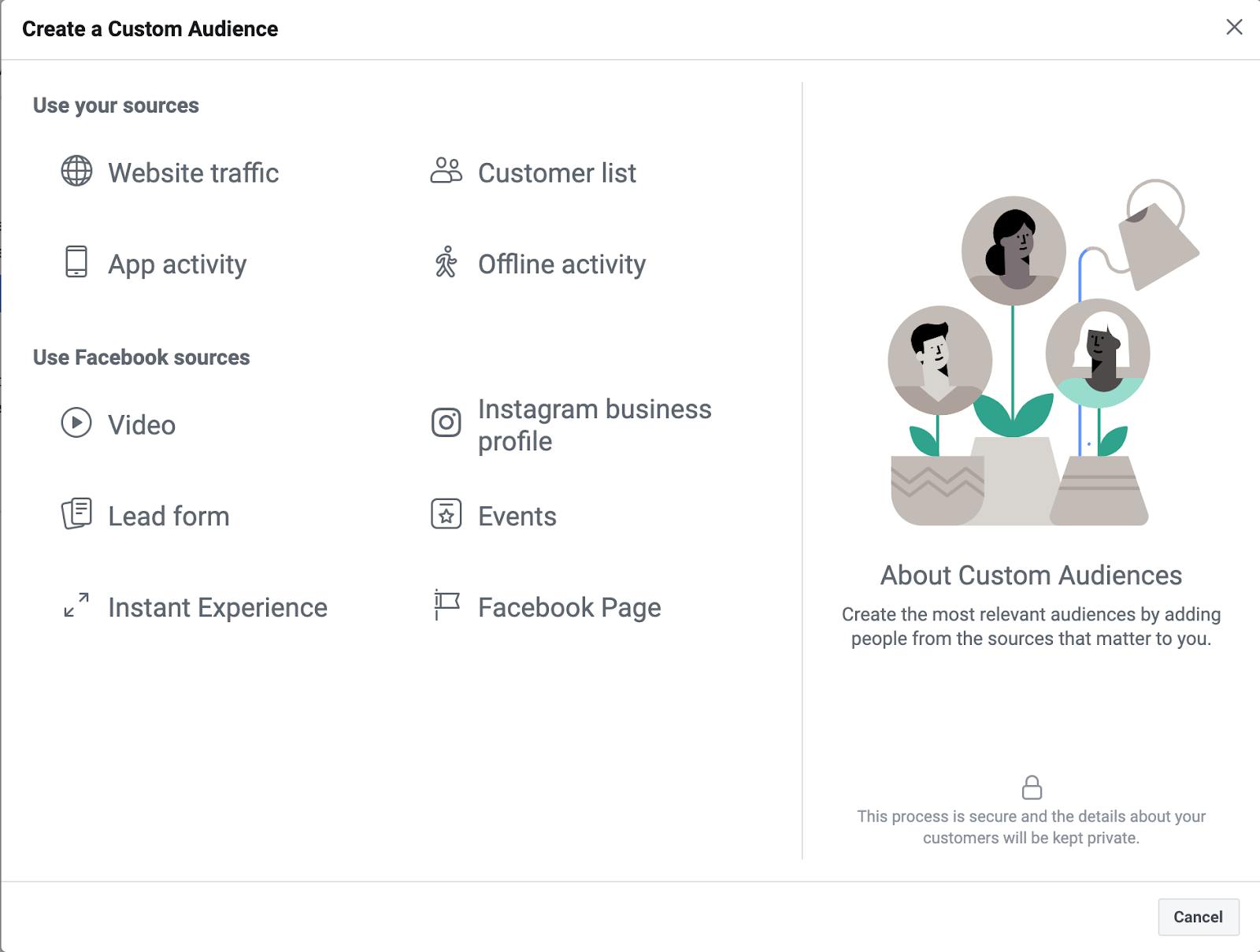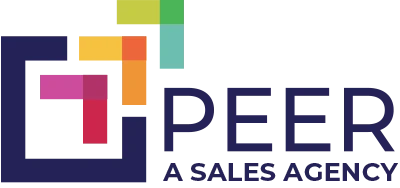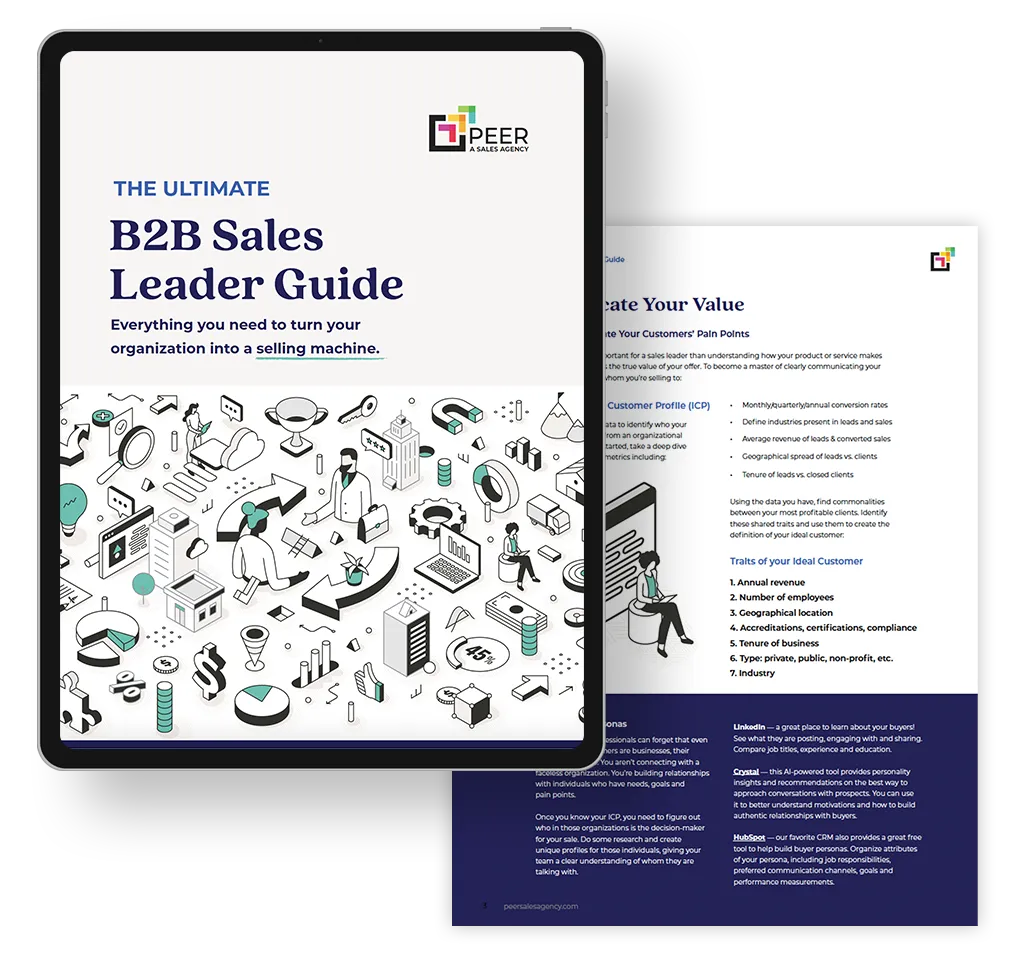Facebook ads can be a monster to tackle, but if you want to generate more SaaS leads, it can be a gold mine if utilized correctly. So, why Facebook? For starters, Facebook has 2.3 billion users. It’s the world’s largest social network, and according to Business Insider, Facebook has more monthly users than there are followers of Christianity, the world’s largest religion. With those stats, you can bank on having an audience. Plus, in terms of advertising costs, it can be one of the most inexpensive ways to generate leads.
In this article, we’ll give your team an overview on how to generate leads using Facebook ads. Keep in mind that this is just an overview and you’ll want a training system to get started.
How Facebook lead gen ads work.
At Peer, we’re a big fan of Facebook lead generation campaigns, especially for SaaS companies.
When you create a campaign on Facebook, you can select the objective “Lead generation” and build a form in your ad’s creative so that people interested in your product can enter their information directly from the ad. The information you can collect includes, but isn’t limited to, names, email addresses, phone numbers, custom fields, custom inputs, and more. This information can be sent to a CRM (customer relationship manager), and your sales team can follow up with them immediately. These ads decrease funnel friction because it keeps the user in the Facebook app rather than sending them to a landing page.
Facebook also gives you the option to pay for leads using either “lowest cost,” meaning Facebook will aim to get you leads at the lowest cost possible, or “bid cap,” meaning you can tell Facebook you only want to spend $5 per lead and Facebook will aim to stay within your parameters. It’s a beautiful system to generate leads and target cold, warm, and hot audiences.
In addition to creating a lead gen form within Facebook, we can also drive traffic to a landing page that collects leads and moves prospects through a sales funnel. If you install your Facebook Pixel correctly, this data will be reported within your Ads Manager.
Lead generation campaigns on Facebook are a great way to target a cold audience and nurture them into leads (and then customers!) through retargeting on Facebook and email nurture campaigns.
Understand your conversion funnel.
When running Facebook lead gen ads, it’s important to understand your conversion funnel. The most important question your marketing team can ask themselves is, “What do our prospects already know?”
Customer awareness stages
Eugene Schwartz is an advertising legend, and he can help us answer this question with the five levels of customer awareness he coined in his book, Breakthrough Advertising.
They are:
- The Most Aware: Your prospect knows your product and only needs to know “the deal.” These are your best customers. They’re excited about your product and support your brand.
- Product-Aware: Your prospect knows what you sell, but isn’t sure it’s right for them. Your leads are aware of your product, but they haven’t purchased yet. They may be comparing you with your competitors and aren’t sure if your solution is the best one.
- Solution-Aware: Your prospect knows the result he wants, but not that your product provides it. Your prospect doesn’t know you exist yet or that you provide a solution to their problem.
- Problem-Aware: Your prospect senses he has a problem but doesn’t know there’s a solution. Your prospect is experiencing pains but hasn’t explored solutions yet.
- Completely Unaware: No knowledge of anything except, perhaps, his own identity or opinion. Your prospect doesn’t have a problem, doesn’t need a solution, and isn’t looking for you yet.
Campaign stages
When we run conversion ads, we break Eugene’s customer awareness stages into three stages:
PROBLEM-AWARE → SOLUTION-AWARE → PRODUCT-AWARE
We then break these three stages into three campaigns:
Top of funnel (TOF): In a TOF ad, your prospects are PROBLEM-AWARE. So, we want to address the problem your prospects are having through storytelling, case studies, and focusing on their pains. This audience is cold.
Middle of funnel (MOF): In a MOF ad, your prospects are SOLUTION-AWARE; therefore, we want to address the solution and target the audience who engaged with your TOF campaign. Some copy we might include could be, “You need to get results back on track,” paired with a call to action to our product. This audience is warm.
Bottom of funnel (BOF): In a BOF ad, your prospects are PRODUCT-AWARE. They know about you and they’re researching if you’re the best solution for them. Here is where we sell our product! We can do so by targeting our warm audience from our MOF campaign, focusing on the features of our product, and offering a killer offer to convert them — like “Sign up today and receive 20% off your membership for the first year.”
Create custom audiences.
The most beautiful aspects of digital marketing are its targeting capabilities and the ability to track conversion metrics. These two features allow marketers to really hone in on their audiences and give us insight into what’s working.
Check out the different custom audiences we can create within Facebook:

Let’s look at our conversion funnel again. Here’s the audiences we might use for each level of the funnel:
TOF: Demographics based on our customer profile or a lookalike audience generated from our customer list.
MOF: Let’s say our TOF ad is using video creative. We could generate an audience of people who watched 75% of our video in our TOF ad and retarget them to our solution awareness ad.
BOF: This audience is warm! If we have our Pixel installed on our site, we can use the data the Pixel has gathered from our sales funnel and retarget these visitors. Pro tip: Use exclusions to exclude current customers. You can learn more about the Facebook Pixel here.
It’s crucial that your team learns how to properly install your Facebook Pixel.
Measure the right metrics.
We always say, if you can’t measure it, don’t do it. As marketers, we need to be analytical about our efforts. Here are the most important metrics to measure to determine digital campaign success:
Cost per lead (CPL): How much is it costing to acquire prospects? Facebook will report this within your Ads Manager.
Conversion rate (CR): This metric is the percentage of visitors that successfully converted to leads or customers. For example, if a campaign brought in 2,000 visitors and the business got 20 leads, that’s a 1% conversion rate.
Customer acquisition cost (CAC): This is how much it costs your business to convince a prospect to become a customer.
Return on ad spend (ROAs): This metric measures the success of your digital ad campaigns. We want to calculate that for every dollar spent on an advertising campaign, the company generates X worth of revenue.
Learn from the pros.
Like we said, Facebook can be a monster to learn, but it’s the most cost-effective advertising investment your SaaS company can make. We wouldn’t recommend approaching this investment blindly. At Peer, we teach your marketing team how to be Facebook marketing pros.
To learn how Facebook can generate your company more leads, get in touch with us.



